Spring’s Wild Beauties
The heart-gladdening beauty of early wildflowers is a signal all is right in the woodland. Which one is your favourite?
In April, hepatica and bloodroot open their blossoms to welcome the warm caress of the spring sun. Trilliums and many others quickly follow, creating a glorious pantheon of woodland beauty. But there is more to woodland wildflowers than their inspiring appearance. Their ecology is fascinating. They are inextricably entwined with other organisms – with the trees that provide shade and drop the leaves that create rich, loamy, nourishing earth, and with a suite of small creatures that pollinates their flowers and disperses their seeds.
Catharine Parr Traill’s spirits were buoyed by these wildflowers. In 1836, Traill, an immigrant to Upper Canada, published The Backwoods of Canada, a treasure of early Canadian literature. Like other pioneers she faced the hardscrabble realities of wresting a living from the land, but she took solace in the beauty of the natural world. Of the springtime wildflowers she wrote: “Our woods and clearings are now full of beautiful flowers … which are here flung carelessly from Nature’s lavish hand …”
A quotation from Traill’s book precedes each of the descriptions that follow. A short article can scarcely do justice to the exquisite diversity of wildflowers Traill celebrated. Please share your favourites and comment below.
Trillium
Trillium sp.
“A very beautiful plant of the lily tribe abounds both in our woods and clearings … the flower is either deep red, or of a dazzling white, though the latter is often found stained with delicate blush-pink …”
The white trillium (T. grandiflorum), the familiar symbol of the province of Ontario, is a tri-petaled beauty that even confirmed urbanites know well. A walk in a local woodlot in May is sure to turn up these spectacular wildflowers, sometimes in sweeping carpets of snowy white.
The antiquity of some trilliums is remarkable. Their life span can rival our own, and they may not reach sexual maturity until their teenage years. Also surprising is that the squadrons of springtime bees and flies largely ignore them. Botanists who study trilliums have observed few pollinators aside from the occasional bumblebee.
More research is needed to uncover the secrets of wildflower pollination. So if you are a wildflower enthusiast with time to spare, why not stake out a patch of trilliums and tally the visitors?
Trilliums and many other wildflowers employ ants to disperse their seeds, and the way they achieve this is quite extraordinary. Attached to each seed is a small, fleshy offering called an “elaiosome.” This structure, rich in fats and proteins, entices ants to carry the seeds back to their colonies where the elaiosome is consumed. Then, in a stunning evolutionary feat described by Carol Gracie in her superbly informative Spring Wildflowers of the Northeast (Princeton University Press, 2012), the trillium seeds, now bereft of elaiosome, emit a scent identical to that of dead ants. The final resting place for dead ants is a rubbish heap beyond the colony, and that’s where ants dump the trillium seeds as well. There in a rich fertilizer of mouldering ant bodies, the seeds stand a better chance of sprouting and thriving than if they were discarded deep in the tunnels of the colony.
The red trillium (T. erectum) is not as plentiful as the white trillium, but is by no means uncommon. It has a lovely, deep red blossom that, according to most wildflower reference books, emits a foul odour. In fact, a common name for this trillium is “stinking Benjamin.” But judge for yourself. I’ve bent and sniffed many times and quite like the scent. It is musty to be sure, but not unpleasant.
The colour and “unpleasant” odour of the red trillium have long been assumed to mimic dead meat, leading to the conclusion that carrion flies help pollinate this plant. Perhaps, but Gracie watched red trilliums carefully and saw only small native bees touching down.
Two other trillium species live here in the Hills, but both are rare, one exceedingly so. The nodding trillium (T. cernuum) is a delicate beauty that blooms a little later than the white trillium. Look for it along trails in Palgrave Conservation Area. The painted trillium (T. undulatum), with white petals splashed by striking red in the centre, is a common trillium of the acidic soils of the Canadian Shield. Here in Headwaters it occurs sparingly in one or two boggy venues. If you find this plant, local conservation authorities would like to hear from you.
Jack-in-the-pulpit
Arisaema triphyllum
“Then we have the Indian turnip; this is a very handsome arum … the leaves of this arum are … slightly tinged with purple. The spathe is of a lively green, striped with purple …”
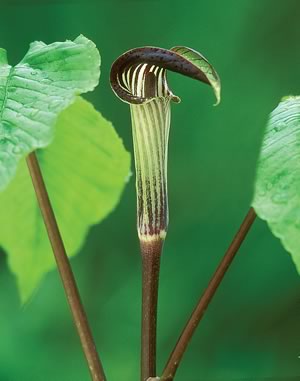
AKA Indian turnip, gender switching is part of the jack-in-the pulpit’s survival strategy. Photo by Robert McCaw.
The jack-in-the-pulpit or “Indian turnip” is a truly beguiling flower. Its remarkable form trumps showiness. “Jack,” standing tall in his sheltered pulpit, gives this unique plant a distinctive look, and the ability of this wildflower to switch genders adds spice to its personality. This plant demonstrates that diverse sexual expression is not a trait unique to humans.
Gender switching is part of the jack-in-the pulpit’s survival strategy. When times are good and resources rich, Jack will be Jill and produce seeds. When times are lean, Jack will bide his time, producing pollen but not fruit.
Jacks, like other plants, defend themselves from herbivores with chemical weaponry. Their tissues are laced with sharp calcium oxalate crystals that cause misery to the soft palates of grazing rabbits, groundhogs and deer.
The name “Indian turnip” suggests Aboriginal people ate jack-in-the-pulpit – and they did, in fact, consume the bulbs, properly known as “corms,” but only after drying, grinding and cooking them. And to prove their mettle, some Aboriginal men did allegedly eat these corms raw, a practice best left in the past. The calcium oxalate can cause the throat to swell, leading to asphyxiation.
Mayapple
Podophyllum peltatum
“There is a plant in our woods, known by the names of man-drake, may-apple, and duck’s-foot … the fruit is oblong; when ripe, of a greenish yellow … when fully ripe it has the flavour of preserved tamarind, a pleasant brisk acid …”
Apples in May? Well, June or July here. And of course, not apples at all, but certainly tasty, edible fruit. Mayapples unfold graceful parasols in April. These leaves, often watermarked by splashes of bronze, shelter a single immaculate white blossom underneath. After pollination, the ovary expands to produce a low-hanging fruit about the size of a plum.
Mayapples, like all fruit-bearing plants, have co-evolved an elegant reciprocal bargain with animals. The animals benefit from nutrition contained in the fruit; the plants by having their seeds dispersed. The seeds pass through the digestive tracts of birds and animals to be deposited, ideally, well away from the parent plant. That the seeds are deposited within a dollop of natural fertilizer enhances their chances of success.
This arrangement cannot benefit a plant, however, until the seeds inside the fruit are ready for planting. That is why unripe apples pucker the lips. And that is why green, unripe mayapples are poisonous. Yellow in mayapples signals edibility. I find their mushiness a little off-putting, but the taste is pleasant.
Mayapples, of course, did not evolve to have their seeds dispersed by Homo sapiens. But they do seem to have forged a rather interesting alliance with eastern box turtles. Box turtles relish the fruit and are particularly well suited to find it. Though hidden from human eyes by the plant’s umbrella leaves, the fruit is quite obvious to a turtle. Studies in the eastern United States have found seeds that pass through the gut of a box turtle germinate far more readily than seeds that don’t.
Perhaps here in Ontario a more likely seed disperser was once the wood turtle. Fruit is part of the omnivorous wood turtle’s diet, and these turtles once ranged across much of southern Ontario. Alas, this species is spiralling toward extinction in our province. If it once played a role in planting mayapples, that role is now sadly diminished.
Hepatica
Anemone americana and Anemone acutiloba
“The hepatica is the first flower of the Canadian spring: it gladdens us with its tints of azure, pink, and white, early in April, soon after the snows have melted from the earth.”
In the astonishing warmth of March last year, I spotted my first hepatica bloom on the 19th. More often, as Traill noted, these flowers debut in April. And what a debut it is. Hepaticas have a knack for tucking themselves into especially picturesque settings – a cleft in a moss-covered rock or nestled against the base of a gnarled tree trunk. A floriferous hepatica with deep purple or pink blooms can be breathtaking.
The stems and new leaves of hepatica are swaddled in hair-like fibres that probably help it endure the cool temperatures of early spring. The three-part leaves are often subtly variegated, which only adds to this plant’s overall appeal.
Small beetles and solitary bees visit the flowers, but hepatica is also an accomplished self-pollinator, meaning it can produce seeds without the help of animals in transferring pollen. The downside of this strategy is the production of seedlings with diminished genetic diversity. The upside is the ability to produce seeds when the cold of early spring grounds flying pollinators.
Bloodroot
Sanguinaria canadensis
“The leaf springs singly from a thick juicy fibrous root, which, on being broken, emits a quantity of liquor from its pores of a bright orange scarlet colour: this juice is used by the Indians as a dye, and also in the cure of rheumatic, and cutaneous complaints.”
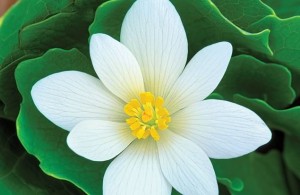
In Nebraska, bachelors of the Ponca tribe believed if they daubed the sap on their hands, then shook the hand of a girl they fancied, she would fall hopelessly under their spell. Photo by Robert McCaw.
Bloodroot captivated me as a child. Not surprisingly, this had much to do with its name, which hints at dark intrigue. When I read about Aboriginal people using bloodroot’s orange sap as body paint, this plant acquired even more mystique. In Nebraska, bachelors of the Ponca tribe believed if they daubed the sap on their hands, then shook the hand of a girl they fancied, she would fall hopelessly under their spell.
Enclosed by protective wraparound leaves, bloodroot blossoms push through the leaf litter on the first warm days of April. Then, energized by the sun, the starry blossoms open to nestle like white spangles on the woodland floor. But theirs is a short-lived beauty. Mere hours after being pollinated by solitary bees, flies or honeybees, the petals drop.
Traill noted Aboriginal people used bloodroot as medicine. They were onto something. Gracie writes: “Laboratory testing of secondary compounds in [bloodroot] have shown antimicrobial, anticancer, and antifungal effects that might be of value in modern medicine.” These chemicals probably evolved to discourage insects and fungi from attacking the plant. They are poisons, of course, and should never be used by laypeople.
Trout lily
Erythronium americanum
“The dog’s tooth violet, Erythronium, with its spotted leaves and bending yellow blossom … delicately marked with fine purple lines on the outer part of the petal, proves a great attraction in our woods …”
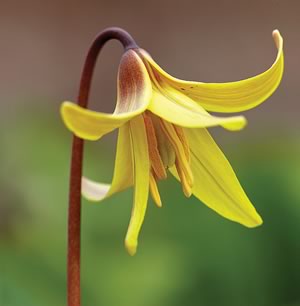
“Trout lily” speaks to the resemblance of the leaves to the mottled flanks of brook trout. Photo by Robert McCaw.
When I was a boy, everyone I knew used Traill’s moniker “dog’s tooth violet” to refer to this wildflower. At the time I had no idea that “dog’s tooth” referred to the shape of the plant’s bulb, but I was delighted by the name nonetheless. I also like “trout lily,” which is more commonly used today. “Trout lily” speaks to the resemblance of the leaves to the mottled flanks of brook trout, which inhabit streams in the same sylvan haunts where trout lilies flourish.
Trout lilies occasionally produce spectacular drifts of flowers. They provide a banquet of pollen and nectar for early insects. Fat queen bumblebees, searching for the perfect spot to establish nests, will put that search on hold to refuel at trout lilies.
The roots of trout lilies are sometimes colonized by a fungus that feeds on nutrients stored in the bulbs, and this provides another extraordinary example of the complex interplay between different organisms. Carol Gracie writes: “[Trout lilies] that have been invaded by mycorrhizal fungi benefit from the ability of the fungus to aid in the absorption of nutrients, resulting in a growth rate that is double that of plants not so ‘afflicted.’”
Columbine
Aquilegia canadensis
“A tall graceful plant, with its brilliant waving blossoms, is this columbine; it grows both in the sunshine and the shade …”
Columbine is another drop-dead gorgeous wildflower. As Traill mentions this plant does not necessarily confine itself to shady woodland habitats. It will grow even in full sun where competition is limited, such as on rocky shorelines or outcroppings. There is a stark contrast between the life strategies of columbine and a wildflower Methuselah such as the trillium. Columbine is short-lived, but produces an abundance of viable seeds that grow to become flowering plants in a mere two years.
If the reproductive strategies of columbine differ from those of other wildflowers, so too does its “choice” of pollinator. Columbine flowers are red, the favourite colour of hummingbirds, and the nectar pools in the bases of long spurs, accessible to hummingbird tongues, but out of reach of most insects.
But hummingbirds are not the columbine’s only pollinator. Gracie notes that the pollen “is particularly sought after by queen bumblebees, which must provision their nests for the young of the year.”
Woodland invaders to watch for
Wildflower populations, along with myriad other life forms, have been reduced greatly by habitat loss. Trilliums, hepatica and other wildflowers don’t grow in parking lots or lawns.
Invasive species also pose a serious threat to cherished native wildflowers. Dawn Renfrew, co-ordinator of Credit Valley Conservation’s Natural Areas Inventory Project, cites garlic mustard (top left) as a particular concern. Allegedly introduced by contemporaries of Catharine Parr Traill for its culinary value, this pungent plant is now rampant in woodland verges, especially where human activity has disturbed the soil. Garlic mustard is “allelopathic,” meaning its root exudes chemicals that impair the ability of other plants to grow nearby. Ominously, garlic mustard has begun appearing within woodlands, where it thrives in the same conditions as trilliums and other native plants.
Caroline Mach, manager of the Dufferin County Forest, seconds Renfrew’s concern about garlic mustard and mentions county forests are under attack by another foreign invader with the menacing name “dog-strangling vine” (top right). A more recent arrival than garlic mustard, dog-strangling vine twines around native vegetation, hogging light and competing for nutrients.
Introduced worms (see In The Hills, autumn 2o11) are also a threat because they consume the fallen leaves that protect and nourish wildflowers. And here garlic mustard rears its leafy head again. This plant’s seeds germinate readily in bare soil, like that left in the wake of worm activity. In the Credit River watershed, Renfrew has observed sites she suspects have been compromised by these worms. The sites “look like they’ve been flooded,” she says, “like everything has been washed away.”
While worms threaten wildflowers from below, deer attack from above. Deer particularly enjoy trilliums, and many wildlife biologists believe there are far too many deer in eastern North America. Human settlement has provided the mix of habitat that deer favour while also eliminating their major predators.
Botanist Dan Barcza, owner of Sage Earth Environmental/Restoration Services, has witnessed the negative impact of deer browsing. “Deer can have a huge impact in areas where they are overabundant in the fall, winter and spring,” he says. When Barcza purchased property in Hockley Valley five years ago, he was struck by the lack of spring wildflowers and understorey shrubs in his deciduous woodland. Since then, he has regularly exercised his dogs in the woods. They pee, as dogs do, to mark their territory. The deer, sensing “predators” in their midst, have reduced their browsing in the area. And the wildflowers? “They’ve rebounded,” says Barcza.
Related Stories
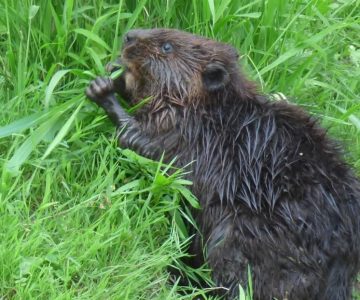
Amazing Beavers
Aug 6, 2019 | | Notes from the WildThis serendipitous meeting with a near-sighted beaver was my favorite type of wildlife encounter!
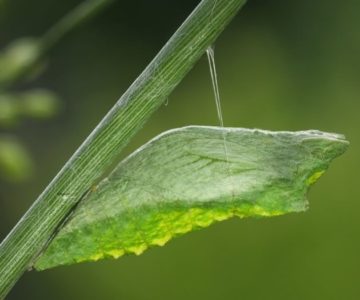
Chrysalides
Jul 4, 2017 | | Notes from the WildWith a few exceptions, chrysalides are designed to be overlooked, to allow the wondrous alchemy of metamorphosis to proceed undisturbed.
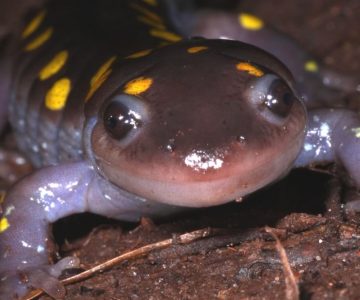
CSI: Natureworld The Case of Burying Beetle Bob
Nov 2, 2018 | | Notes from the WildA CSI probe into Bob’s disappearance has revealed damning evidence linking Sam to the incident!
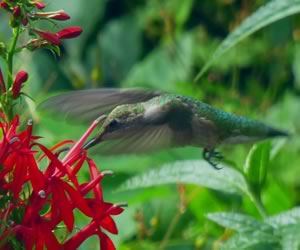
Hummingbirds
Aug 12, 2015 | | Notes from the WildThe migration of ruby-throated hummingbirds to and from the tropics puzzled early birdwatchers.
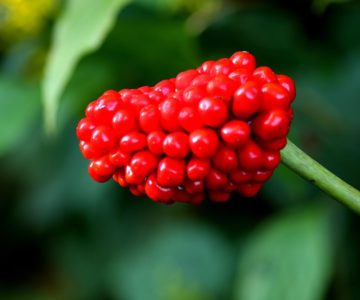
Jack in the Pulpit
May 14, 2012 | | Notes from the WildThese plants can switch genders throughout their lives in response to growing conditions.
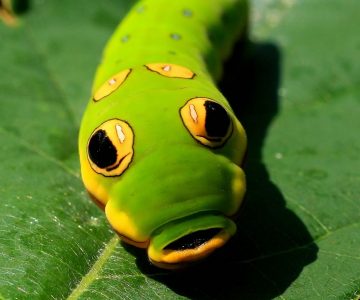
Spicebush Swallowtail Caterpillar
Sep 4, 2018 | | Notes from the WildI’ve written about our remarkable caterpillars before, but so many interesting ones inhabit our hills that another look is warranted.
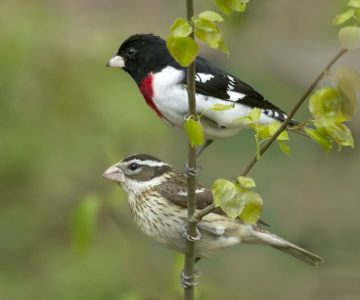
Spring Songbirds
Jun 14, 2019 | | Notes from the WildMay and June herald the arrival of a trio of supremely beautiful tropical migrants: indigo buntings, Baltimore orioles and rose-breasted grosbeaks.
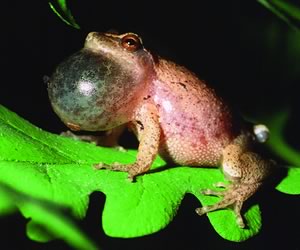
Spring Peepers
Apr 18, 2010 | | Notes from the WildOn warm evenings in April and May our hills awaken to the life affirming voices of spring peepers. Their shrill calls stir the winter weary soul.

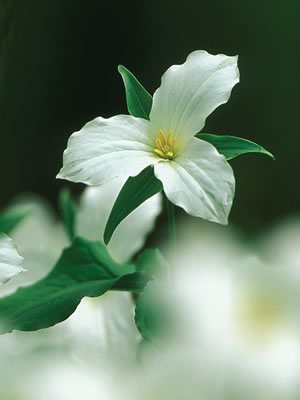

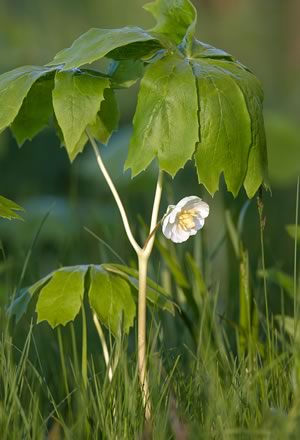
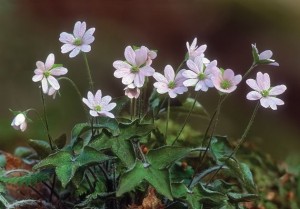
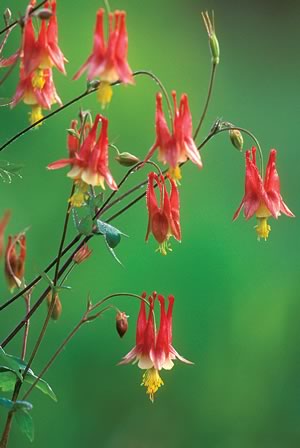
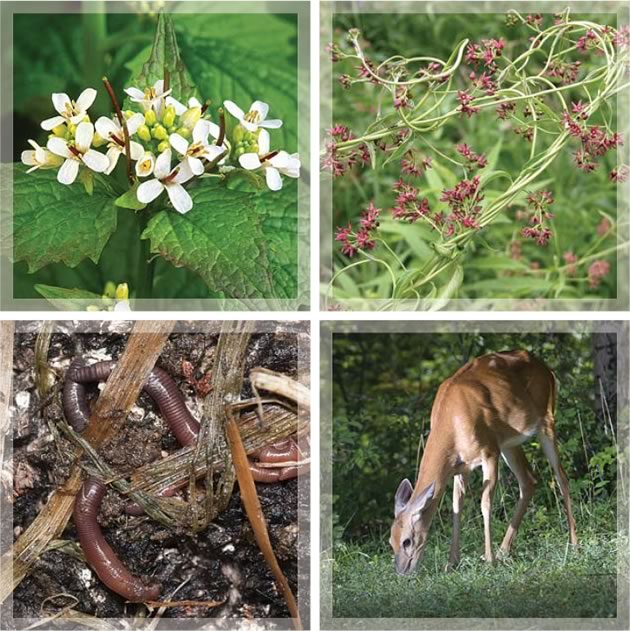
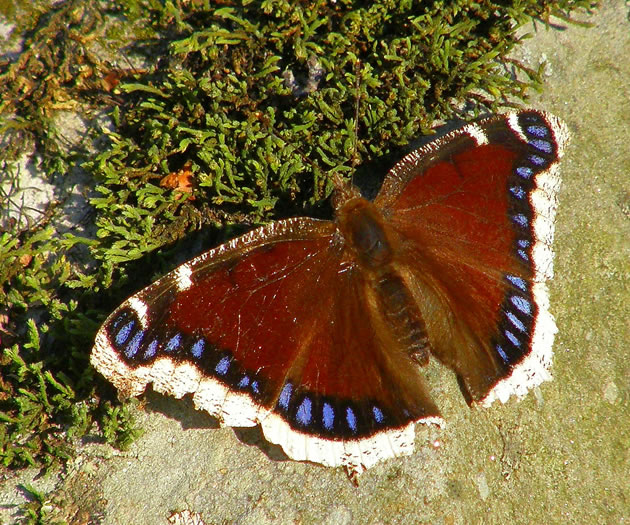






A Palgrave Forest walk yesterday revealed a rich panoply of newly blooming early Spring flowers at a later-than-usual date – Hepatica, Spring Beauty, Blue Cohosh, Bloodroot, and Coltsfoot in flower and Trout Lily and White Trillium with flower buds. Marvellous colour after a drab early Spring
Ian Anderson from Cedar Mills on Apr 29, 2013 at 2:32 pm |
The red trillium is one of my favourite spring flowers, but I never grow tired of the trout lily. Another beauty that I enjoy is the marsh marigold, which splashes bright yellow on riverbanks and marshes.
Doug Colter from Brampton on Apr 22, 2013 at 12:42 pm |